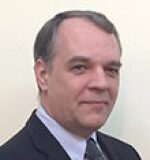Big data, in its many forms, has promised much to the oil and gas industry but mostly is perceived to have been slow to deliver. This is not at all surprising. We must walk before we can run, and, as experience has grown with the nuances and successful and unsuccessful avenues of investigation, the industry has continued to move forward. As the saying goes, “Data is like people: Interrogate it hard enough and it will tell you whatever you want to hear.”
From early and almost naïve beginnings, where systems would confidently predict that Friday followed Thursday, we entered a phase where data mining began to provide insight. Often these insights confirmed long-established relationships; for example, in hydraulic fracturing, more than once I have seen heavily marketed research and development that professes to predict the onset of screenout conditions only to see that the system has effectively “seen” a Nolte-Smith relationship. These, however, are mere stumbles of any system picking itself up and beginning to move, and should be expected.
What we have seen are continued areas of application opening up, where approaches deliver real efficiency gains and highlight further opportunities. The papers that I included this month fall into these categories, demonstrating real measurable efficiency gains and advantages, often processing volumes of data that previously could not be managed by conventional means. Performance measurement and drilling automation are two such examples, and the papers referenced this month, both as synopses and listed for further reading, fall into this category.
Not surprisingly, as we apply data science to broader problem sets across the industry, we will see continued development and demonstrated success. Sharing these successes will ensure that this momentum is sustained and that advances continue.
This Month’s Technical Papers
Collaborative Approach Optimizes Automated-Drilling Performance Measurement
Collaboration Allows Introduction of Automated Advisory System in Offshore Well
Fully Automated Directional Drilling Used on the Norwegian Continental Shelf
Recommended Additional Reading
IPTC 21419 Delivering More Fit-for-Purpose Wells With Low-Cost Approach at Untapped Area Matured Field—Application of Cone Concept Statistical Approach by M. Hatta M. Yusof, Petronas, et al.
IPTC 21490 Pore-Pressure Estimation by Using Machine‑Learning Model by Pichita Booncharoen, Chevron, et al.
SPE 209712 Drilling Control System Automation To Control Axial Velocity Optimizes Tripping and Drilling Performance by Robert Bacon, Sekal, et al.

Martin Rylance, SPE, is the discipline lead and distinguished adviser for fracturing and stimulation at Three60 Energy. Previously he worked at BP and its joint ventures and partner companies for more than 35 years. Having lived in 12 counties and pumped in 42, Rylance has international experience in fracturing and stimulation services, well control, and multilateral drilling. He is a coauthor of several books, including Modern Fracturing: Enhancing Natural Gas Production, and is author of more than 200 industry technical papers, articles, and patents. Rylance has been an SPE Distinguished Lecturer in 2007–2008, 2013–2014, and 2018–2019. He is a Distinguished Member of SPE and received the SPE Completions Optimization and Technology Award for the SPE Gulf Coast Section in 2015. Rylance is a member of the JPT Editorial Review Board and a director of the SPE Hydraulic Fracturing Technical Section and serves on multiple SPE committees. Rylance holds a BS degree from the University of Salford and is a Chartered Engineer and a Fellow of the Institute of Mathematics.

